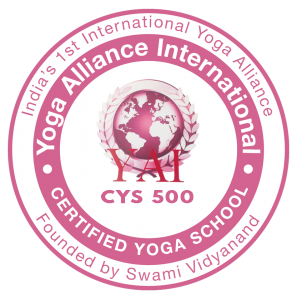Information


Understanding the connection between Ayurveda and Yoga can bring us closer to connecting with both in our daily life. I will try to simplify this post because there is so much information about both systems. However I will focus on the main points and a small introduction to both so that it is (hopefully) clear to understand for those who are maybe new to these or for those who want to understand the connection between the two.
Yoga and Ayurveda originated in India and date back to over 5000 years ago. They both have their roots in Samkhya philosophy. In my opinion, living an Ayurvedic lifestyle naturally also takes one into yogic practices. Similarly one who practices yoga (not just asana practice), naturally also implements Ayurvedic daily habits. They cannot be separated.
Ayurveda is often named as the sister science of yoga, but what does this mean and how are Ayurveda and Yoga related?
WHAT IS AYURVEDA?
Ayurveda is translated as “The knowledge of life” or “The science of life”. The word “veda” means knowledge and “ayur” can be referred to life. Ayurveda is a holistic approach to wellness and healthy lifestyle. It is essentially a holistic system which focuses on maintaining good health and wellbeing. The root of everything in Ayurveda stems from the “3 doshas” which are known as the body constitutions. According to Ayurveda, there are 3 different types of individual make-up which are unique to each person and in accordance with the 5 universal elements (earth, fire, water, air, space). Each one of these doshas is represented by the combination of 2 elements and each individual is said to have a different percentage of these. The three doshas are :Vata (air and space), Pitta (fire and water), Kapha (earth and water).
According to Ayurveda, maintaining a balanced lifestyle is based on knowing, understanding and making decisions and habits that best harmonise and balance a person’s individual dosha. Although we have all three of them, one is usually more dominant than the others. (Learn about your Ayurveda dosha).
WHAT IS YOGA?
Yoga is darshana, a philosophy of life as such, which dates back to the Vedas. Although it is common to think of yoga as just the asana practice, this is a small part of it, which is mentioned mainly in the Raja yoga path/the eight limbs of Yoga by Patanjali. The word yoga is derived from the Sanskrit root “yuj” which refers to “union” , “to bind” or bringing together in union. Yoga offers four different paths which are Bhkati, Raja, Karma and Jnana (you can learn about each one in this post). Each path comes with its set of spiritual practices and tools for the aspirant to follow in their yogic journey. The reason for yoga (I try to avoid the word “goal) is to bring the student/yoga practitioner to Moksha, a state of freedom from ignorance of one’s true nature and in union with the Divine essence or infinite consciousness that is present within all manifested form. Now then, we can understand where the “union” or “bringing together meaning refers to.
Ayurveda focuses primarily on the health and wellbeing aspect. The Ayurvedic habits and routines provide a helpful approach to daily lifestyle choices such as the type of food one eats, daily activities and exercises, quality of sleep, how to nurture and nourish ourselves not only physically through food but through all daily habits always in accordance to a person’s dosha type. Ayurvedic medicine also involves the use of specific herbs to treat some illnesses or doshic imbalances, and the use of spices in foods and drinks (such as tea or specific herb beverages) for the same reason, to create balance in the body and mind. Ayurveda can help us to purify the physical body through the foods, spices, herbs and body treatments it provides. Some examples of these are Abhyanaga, Panchakarma, Shirodhara etc.
Yoga is a discipline and it focuses on following the specific practices towards evolving spiritually and bringing the mind into a state of stillness. Like Ayurveda, it can also help to purify the physical body through asana or kryas (yogis purification practices), however pranayama practices go deeper to the subtle body/energy body. Mental purification is one of the main aspects of Yoga, which can be done through dhyana (meditation) or bhakti/devotion which are considered higher spiritual practices. Only when the mind is purified and stripped away from impurities, thoughts & emotions can be understood and balanced and ego is tamed; then one can grow towards Moksha.
Practiced together, Ayurveda and Yoga provide a complete holistic approach to a balanced, harmonised and healthier lifestyle.